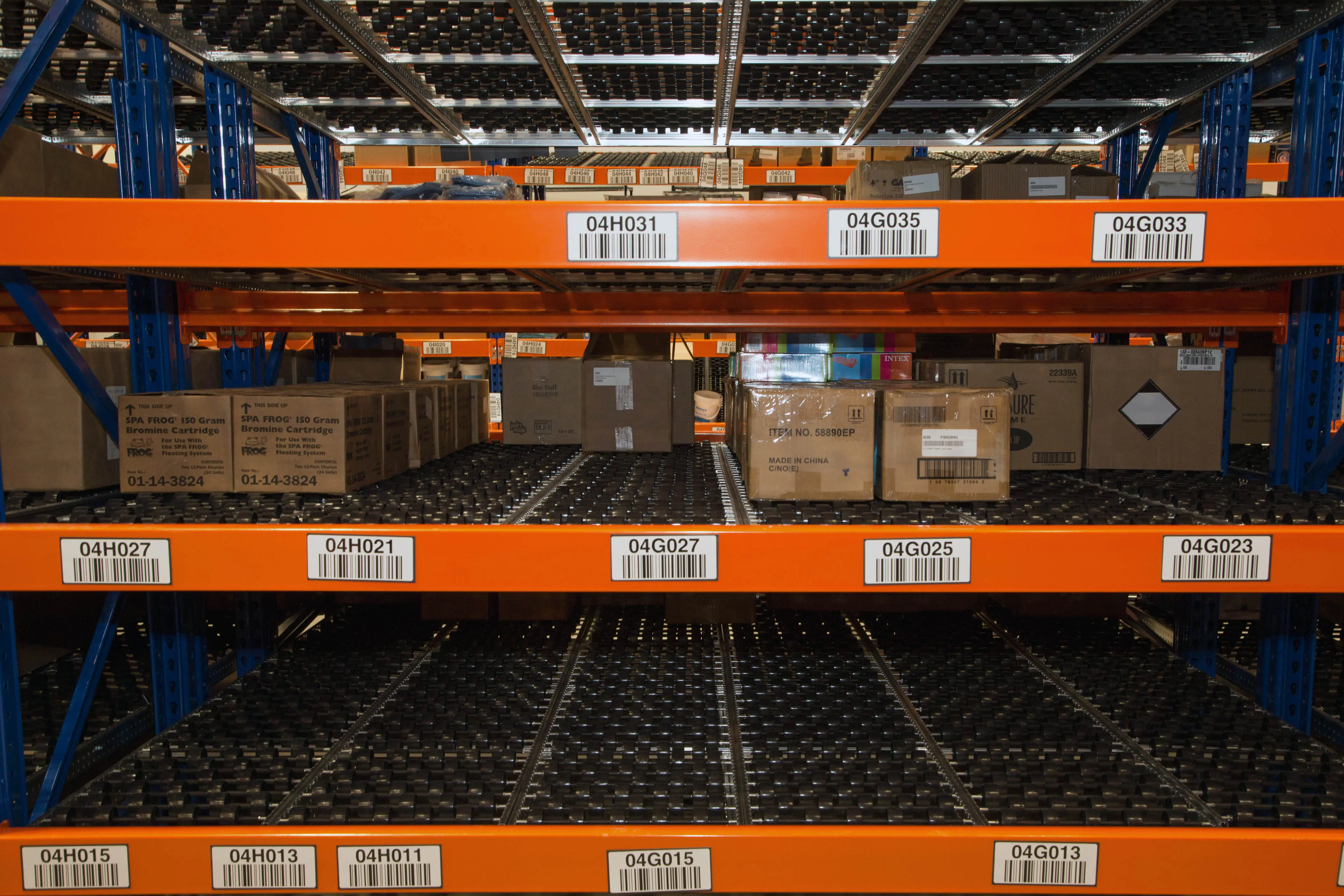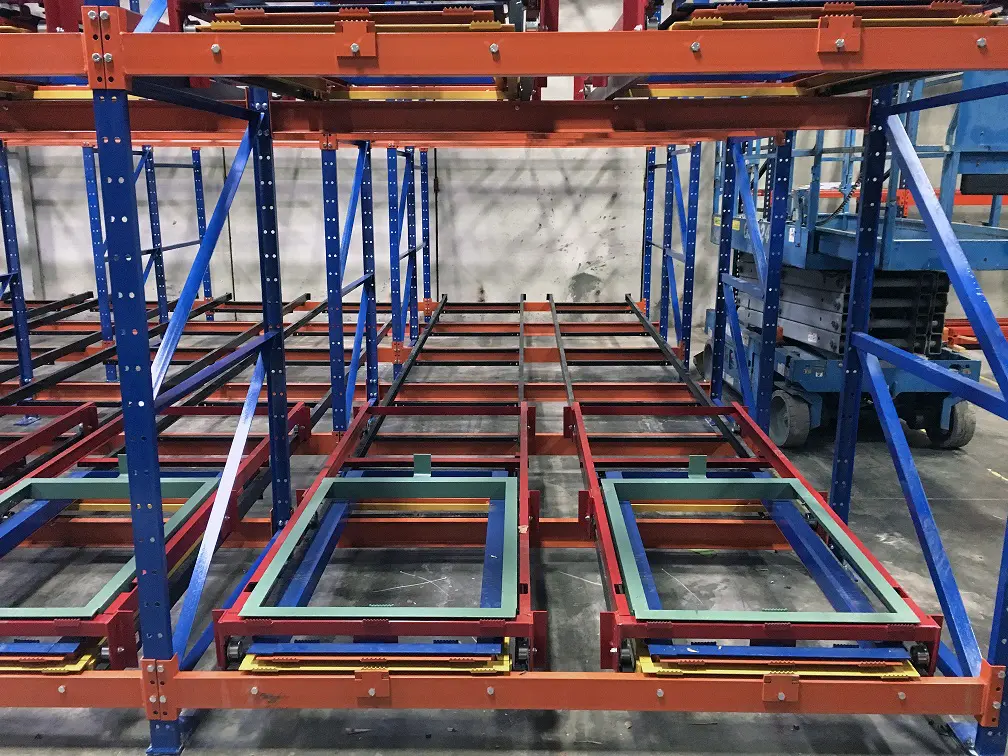How to Determine the Right Order Picker Rack
When you have large numbers of orders leaving your warehouse daily, having order picker rack that is right for your SKU characteristics and picking process is important. The right rack system will ensure an efficient operation.
Read below to understand common operational needs and which type(s) of order picker rack is right for them.
Determine What’s Most Important for Your Operation
Prior to selecting a type of order picker rack, you must first assess your operation to determine what you need to accomplish with the rack. To do this, assess your space, SKU characteristics, and picking practices.
Here are three common things operations look to accomplish with their order picking rack system:
Selectivity
Selectivity is how easily accessible the pick face of an item is. The higher the number of pick faces, the higher the selectivity.
Selectivity is important to consider because it directly effects how efficient your operation is. For example, if there are SKUs of items that have high pick rates you would need more pick faces to accommodate more pickers picking that SKU. Increased selectivity helps reduce bottlenecks in this situation.
Selectivity can also come into play depending on the number of pallets per SKU you have. For example, if you only have one pallet per SKU, then it is important to have a pick face for each SKU. You don’t want to be moving one SKU to access another SKU. To avoid this type of bottleneck, you’ll want to choose a type of order picking rack that allows for high selectivity, such as standard selective rack.
Density
Storage density is how many pallet positions or cases your warehouse can store in a defined space. To achieve high storage density, you need to choose an order picker rack system that makes the most of the floorspace in your warehouse.
A major reason to prioritize high density is to accommodate current or future growth. Choosing an order picking rack system that has high density will often allow you to avoid moving to a new building either now or in the future. Focusing on improving your storage density is much more time and cost effective than moving your operations to a new facility.
You may also want to focus on density over selectivity if you have a high number of pallets of the same SKU. For example, if you have a high number of pallets of the same SKU that is a slow mover, choosing a high-density rack system such as drive-in racking will ensure you make the most of your space. Selectivity is a low priority in this case.
Product Flow
Having certain SKU characteristics can impact the priority of your rack system features. For example, if you have products with expiration dates, having an order picker rack system that prevents these products from becoming outdated should be the number one priority.
There are two types of product flows that rack systems offer: first-in, first-out (FIFO) and last-in, first-out (LIFO).
First-in, first-out is a type of inventory management that allows inventory placed into a rack system first to be removed first. This is ideal for operations that require regular stock rotation, store items with expiration dates, or have a high inventory turnover rate.
Last-in, first-out is a type of inventory management that allows you to remove the most recently placed inventory in a rack system. This is ideal for operations that store non-perishable items, items with long shelf lives, or large quantities of the same item.
Determine Which Type of Order Picker Rack is a Fit
Once you understand which rack system characteristics you need to prioritize based on your SKUs, space, and picking requirements, you can now properly assess each type of order picker rack system to determine which is right for you.
Rack Options for Case Order Picking
Carton Flow
Selectivity: moderate
Density: high
Product flow: first-in, first-out
Carton flow rack is an efficient option for case and piece picking. It uses gravity and inclined rollers to provide first-in, first-out product flow. Carton flow rack is commonly used for products that can become outdated, decline in value overtime, or have warranties that expire.
Click to learn more about carton flow rack.
Rivet Shelving
Selectivity: high
Density: low
Product flow: first-in, first-out or last-in, first-out
Rivet shelving is a non-rack option for order picking. Rivet shelving is typically used for piece picking of lighter products, and often incorporates a bin storage system for product organization. Rivet shelving is versatile and can be used in a variety of settings from distribution centers to retail backrooms.
Click to learn more about rivet shelving.
Rack Options for Palletized Order Picking
Push Back
Selectivity: moderate
Density: high
Product flow: last-in, first-out
Push back rack uses carts that move along inclined rails. This type of system is typically higher density in overall footprint compared to pallet flow since it only requires one aisle for loading and unloading.
Push back rack can be up to six pallets deep. Each aisle in a push back system should be dedicated to one SKU, so operations with multiple pallets of the same SKU will be a good fit for this.
Click to learn more about push back rack.
Pallet Flow
Selectivity: moderate
Density: high
Product flow: last-in, first-out
Pallet flow rack is a first-in, first-out option for pallet storage. Because of this, it’s commonly used for products that can become outdated, decline in value overtime, or have warranties that expire.
Click to learn more about pallet flow rack.
Selective
Selectivity: high
Density: low
Product flow: first-in, first-out
Standard selective rack is a one-deep system. This type of system is a versatile pallet rack system and because of this is very common in distribution centers. Standard selective rack is typically paired with 12′ aisles. This characteristic combined with a one-deep profile provides a low-density solution.
However, standard selective can be designed with very narrow aisles, about 6′ to 6′-6″. This option increases density while maintaining selectivity.
Click to learn more about selective rack.
Double-Deep Selective
Selectivity: moderate
Density: high
Product flow: last-in, first-out
Double deep selective consists of two standard selective racks set up back-to-back, creating a two-deep system. This configuration increases density, but sacrifices some selectivity compared to standard selective.
Drive-In
Selectivity: low
Density: high
Product flow: last-in, first-out
Drive-in rack uses support rails attached to uprights. This combined with one aisle for loading and unloading allows for this system to be extremely dense. Due to the low selectivity, it’s recommended that each lane be dedicated to one SKU. It’s often used to house only one SKU in the entire system.
Click to learn more about drive-in rack.
Your Next Step for Order Picker Rack
Whether your next step is to gather more information or request a quote, consider REB Storage Systems. REB is a highly experienced systems integrator, in business since 1962.
REB is highly knowledgeable and experienced in designing and installing order picker rack systems. We work with you to provide a turnkey system. From design, products procurement, subcontractor management, install, and permitting support, REB handles it all for you.
We’d appreciate the opportunity to help you further, whether that be more information or a quote. Fill in the contact form on this page or call us at (800) 252-5955 to get in touch with a REB representative.
Share this post:
Submit Your Inquiry
Since 1962
REB has completed more than 100,000 projects in 15 countries (including all 50 states) for more than 20,000 customers across 50 industries, with 70% of customers as repeat buyers.
This is made possible by our team that has more than 300 years of industry experience designing and project managing material handling systems.
Learn more about REB's award winning service.







